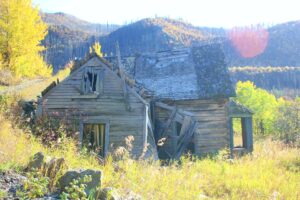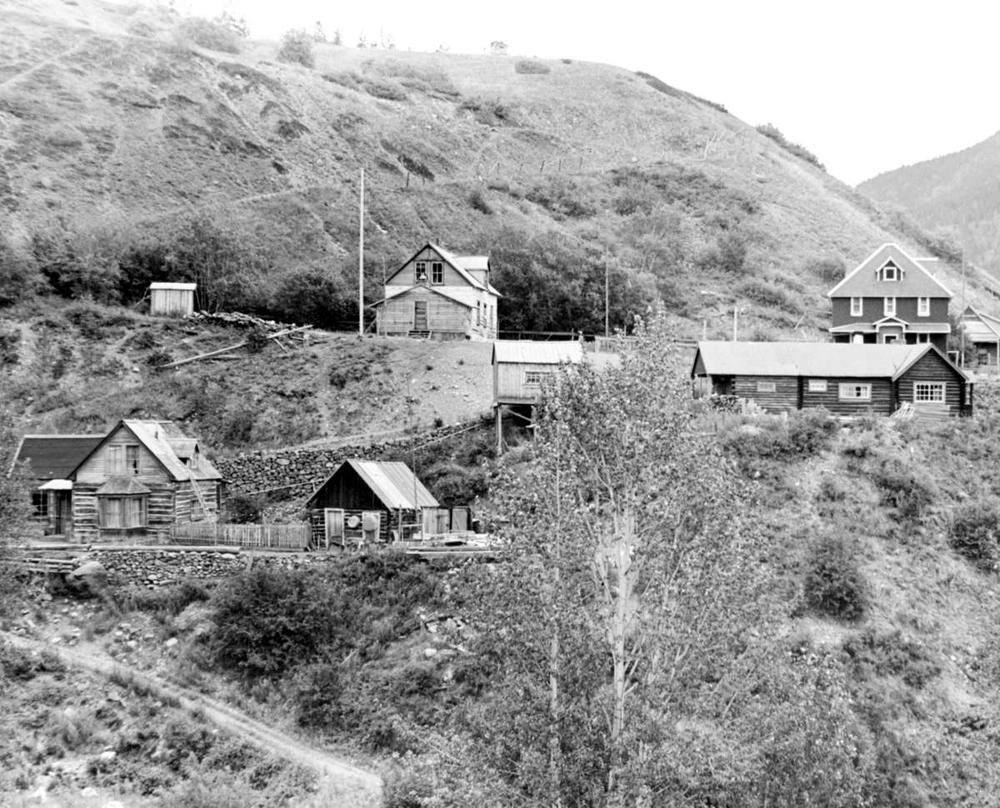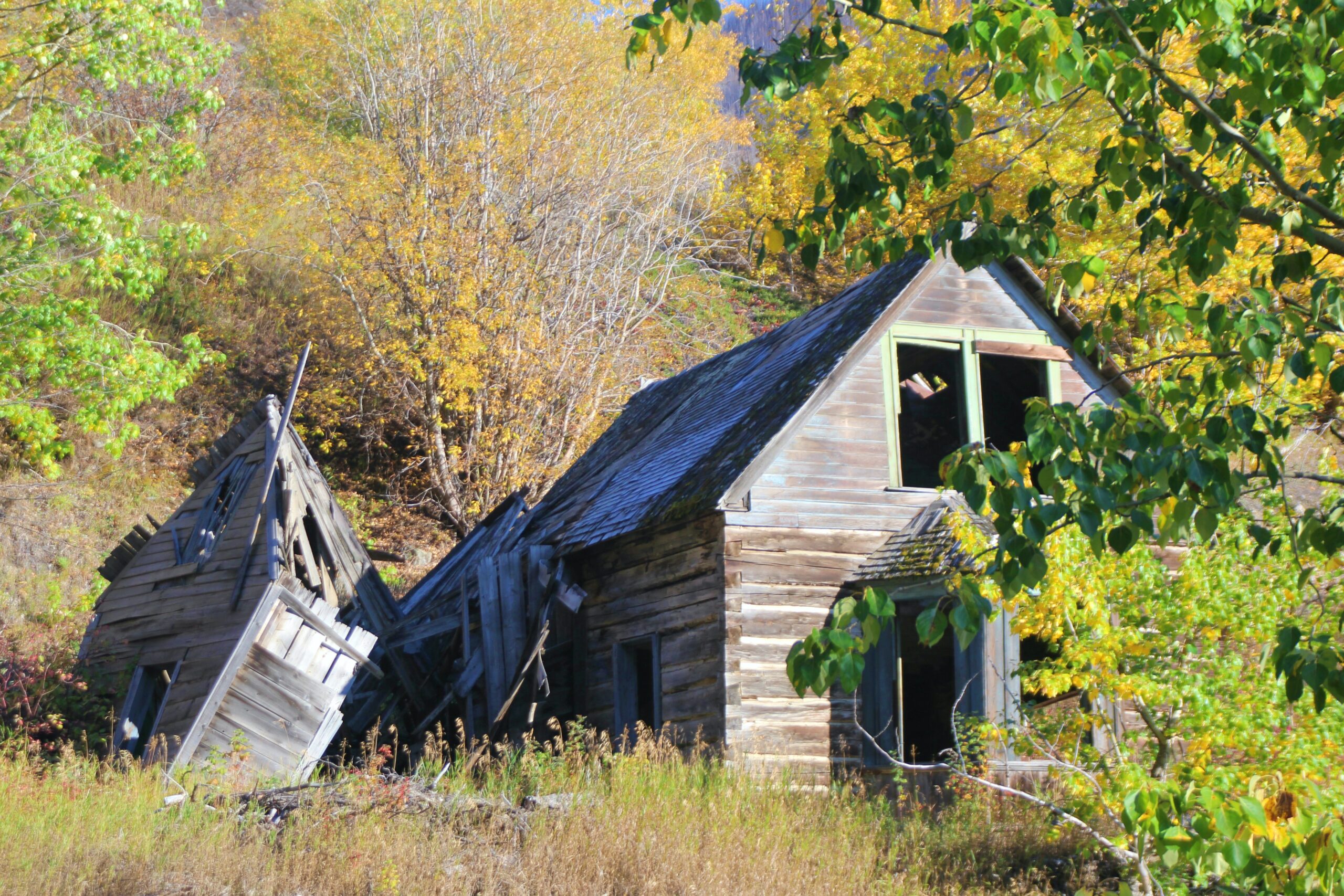The House in the Photo, 1st House Going Downtown
The house in the header photo for the Stikine Valley website is the house that Kathy’s grandmother, Kasha (Julia [Vance] Callbreath) grew up in. It is the first house as you head down into the old Telegraph Creek downtown, right across from Vance Bridge.
The Vance House

The Vance house, as it is known, may be one of the most photographed building in Telegraph Creek, along with St. Aiden’s Anglican church beside the creek down at Stikine Street, right across from the river, and Riversong Cafe, downriver on Lower Street, which was originally the Hudson’s Bay store.
(According to some sources, the Hudson’s Bay store and it’s warehouses, which are still standing (some just barely), were brought upriver by barge from Glenora, when Telegraph Creek became the community of note.
Others say the building were dragged up the Stikine after it froze and had a good layer of snow on it.)
The Vance house belonged to Charlie and Agnes (Quock) Vance. They raised eleven children in this small log home!
There was a 12×12 foot frame addition on the side of the log house, which has collapsed, having fallen victim to the ravages of time, as all abandoned buildings eventually do. But in its day, this house stood high on the banks of the creek, brightly coated in whitewash like many of the buildings in the town.
Old Photo
In the photo below, it is the house on the left in mid frame. The smaller structure was used to store ice cut from Sawmill Lake. Note the ladder against the roof and the other ladder on the roof. Back in the day, we all had ladders set up like this to quickly access the chimney in case of a chimney fire.
The building at the top in the center was the school (that’s another story), while the large building on the top right was the hospital. Below that is a newer, “Panabode” style house. Up until a few years ago, someone still lived there. It had forced-air heat and modern plumbing with hot and cold running water. It is now empty, and the doors and windows have all been removed. Most of the metal roofing is now gone, and the weather quickly taking a toll.

Whitewash
Whitewash was a mixture of lime and water. The dry lime was “slaked” or mixed with water forming Ca(OH2) or calcium hydroxide, which had to be done with care, as it is an exothermic reaction, meaning it gives off heat.
(As someone who has mixed quicklime with water for masonry work when the dry “lime” most of us are familiar with was not available, it’s important to give this warning – it is a dangerous process if you’re not really careful.
Unslaked lime, commonly known as quicklime, reacts very violently with water, making it boil very quickly. Careless handling is extremely dangerous, so if you ever try it, make sure to do your research, first.)
This mixture of lime and water is what was called whitewash. It is applied with a brush and is readily absorbed by wood, leaving a white finish.
A Great Preservative
The more that is applied, the whiter the finish appears. This comes from the calcium hydroxide reacting with carbon dioxide in the air to form calcium carbonate.
This is the process known as carbonation. It is the same process that makes your cold pop fizzy!
But when this happens on the surface of whitewashed wood, it inhibits bacteria and mold, and does a great job of preserving wood. This is why the house in the photo still exists all these years later, even though no one has lived in it for more than fifty years!
More is Better
Obviously, logs can absorb a lot more whitewash than lumber, and this is probably why the log structure of the Vance house has withstood the weather for so much longer than the lumber frame addition. But time is taking a toll, and the possibility of restoring what is left diminishes with every passing year.
But the good news is that a relative sent us a photo of the old house this past winter, still holding a load of snow on its aging roof. If the roof will still hold a winter snow load, it will hold sheet metal roofing. If we can get a new roof on it and keep the rain out, there is hope!
Have you taken on such a project? How did it go? Tell us about it in the comments!
